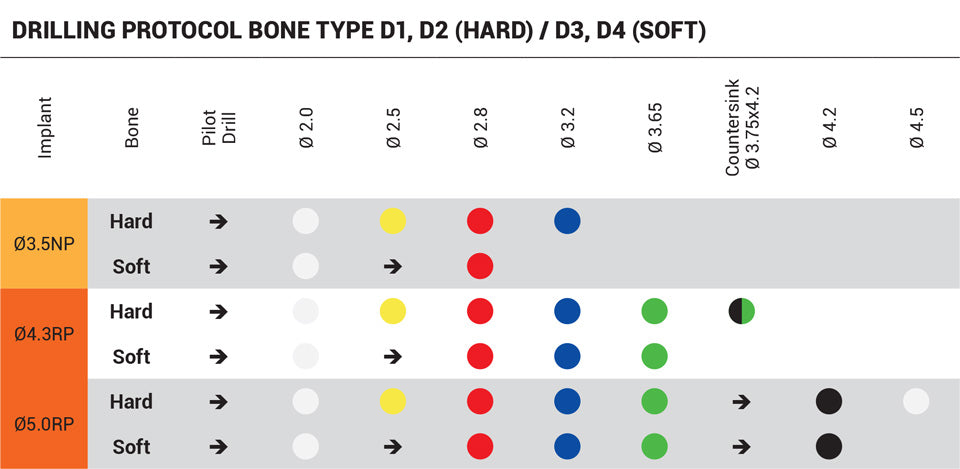Premium Spiral Implant CC
Main Features
Sterile implant with cover screw in a sterile double tube in blister
Immediate loading, suitable for extraction sites, traditional 2-stage protocols, and both single and multi-implant restorations, can be used for all bone types
- REF: SCI0835
- Type: Conical Connection NP Ø3.5mm
Full description
Full description
DSI Conical Implants create an ultimate seal and an ideal connection between the implant and abutment, reducing micro-movements, while submerged hex simplifies the positioning of the abutment. A double progressive divergent thread slices and gradually compresses the bone as it progresses from the implant's neck area. It provides more strength and stability in demanding situations, such as extraction sockets, poor bone quality, and immediate loading protocols.
DSI conical implants are self-drilling and self-tapping with the micro-rings on the neck of the implant assisting in reducing bone stress and bone resorption and increasing BIC. The surface roughness and micro-morphology are a result of sandblasting and acid etching. This proven surface technology provides excellent osseointegration resulting in long-lasting clinical success.
Indications:
- Immediate loading - suitable for extraction sites, and demanding situations that require immediate implant placement or immediate function.
- Traditional 2-stage protocols.
- Both single and multi-implant restorations
- It can be used for all bone types and is suitable for soft bone types III, and IV.
Advantages:
- Made of titanium alloy grade 5 Ti-6Al-4V ELI
- SLA surface treatment for better osseointegration
- Fully compatible with NobelActive® Implant NP platform
- High-stability restorations
- Fast Insertion and excellent primary stability
- Self-drilling and self-tapping
- Solid morse taper conical-hex NobelActive® compatible connection
- Anatomy converging coronal shape and platform switch ability allows optimization of the bone and soft tissue volume for preventing future deterioration.
- A double progressive divergent thread slices and gradually compresses the bone in order to deliver more strength and stability in cases of extraction sockets, poor bone quality, and immediate loading.
- Reverse-cutting flutes with drilling blades increase aggression and sharpness at the third coil from the apical end to deliver excellent primary stability.
- Possible to adjust the implant position during placement for an optimized orientation.
- Creates a strong, stable, and solid conical connection with hexagonal interlocking and abutment-reducing micro-movements.
- Micro-rings on the implant's neck reduce bone stress and resorption and increase BIC.
SLA Surface Treatment:
The classic SLA surface, short of «Sand-blast, Large grit, Acid-etch» is based on a large aluminum oxide Al2O3 particles sandblasting technique that generates a macro-roughness on the titanium surface. Sandblasting is followed by an acid-etching batch at high temperatures. As a result, subtle-sized 2-5 micron micropores appear at the implant surface. This unique macro/micro-topography provides an ideal structure for cell attachment while reducing the possibility of bacterial colonization. SLA surface treatment is one of the most used in modern dental implantology. The studies confirmed its strong long-term performance, high mechanical stability, and low odds of developing peri-implantitis. DSI has improved the process, making it hands-free and minimizing the aluminum oxide residuals that may remain on the surface and could significantly impair osseointegration.

Have a Question?











